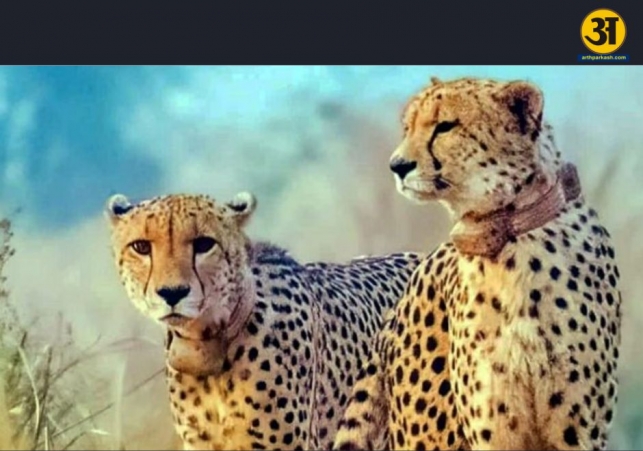
India eyed Somalia, Tanzania, Sudan for Cheetahs to avoid adaptation issues
India explored Cheetah imports from Somalia, Tanzania, and Sudan to overcome adaptation hurdles
- By Gurmehar --
- Sunday, 25 Aug, 2024
Some cheetahs brought to India from Southern Hemisphere countries like Namibia and South Africa have developed thick winter coats during the Indian summer and monsoon. This unusual change is due to the animals anticipating the African winter (June to September). As a result, some cheetahs suffered severe infections under their winter coats, leading to deaths. Officials believe that differences in circadian rhythms between the Northern and Southern Hemispheres may be causing these issues.
Sourcing Cheetahs from Northern Countries
India is now considering bringing cheetahs from Northern Hemisphere countries like Kenya, Somalia, and Sudan to avoid such complications. Experts say cheetahs from these regions may adapt better to India’s climate, reducing risks of infections during seasonal transitions. The steering committee has recommended focusing on cheetah sourcing from countries closer to the equator or in the Northern Hemisphere to align with India’s environment.
ALSO READ: Kolkata doctor's rape-murder: unfolding the events of August 9
ALSO READ: Supreme Court seeks nationwide feedback on Bar Association reform
Managing the Cheetah Project in Kuno Park
The National Tiger Conservation Authority (NTCA) and experts are working on resolving these challenges. This includes improving prey availability, controlling the leopard population, and finalizing schedules for releasing the cheetahs in Kuno National Park. After three cheetahs died from septicemia last year, the remaining cheetahs were brought back to enclosures. Plans are now in place to gradually release the cheetahs and their cubs into the wild after the monsoon ends, with the adult cheetahs being released first and the cubs and their mothers later.
India remains committed to ensuring the long-term success of the cheetah reintroduction program by carefully managing sourcing strategies and addressing the unique challenges faced by the big cats in their new environment.





